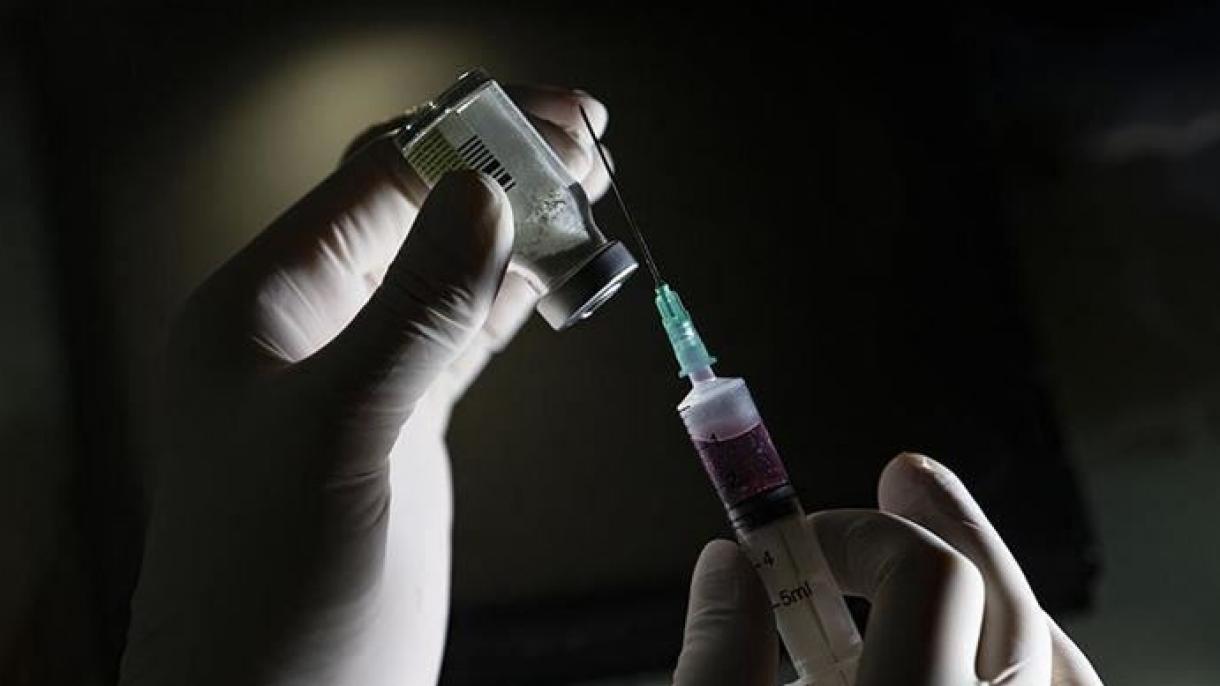Pfizer and BioNTech Announce New England Journal of Medicine Publication of Phase 1 Data on Lead mRNA Vaccine Candidate BNT162b2 Against COVID-19
NEW YORK and MAINZ, GERMANY, October 14, 2020 —
Pfizer Inc. (NYSE: PFE) and
BioNTech SE (Nasdaq: BNTX) today announced that preliminary, peer-reviewed data from the Phase 1 portion of their ongoing U.S. study of BNT162b2 were published online in the
New England Journal of Medicine (NEJM). BNT162b2, which has advanced into a global Phase 3 study, is part of the companies’ mRNA-based vaccine development program against COVID-19. The publication describes key safety and immunogenicity data from the Phase 1 portion of the U.S. trial for the BNT162b2 and BNT162b1 vaccine candidates. Among the Phase 1 study participants aged 18 to 55 years, the 50% neutralizing geometric mean titers (GMTs) for the two vaccine candidates at the 30-μg dose level on day 28 or day 35 ranged from 1.7 to 4.6 times the GMT of a panel of SARS-CoV-2 human convalescent sera (HCS). In addition, 50% neutralizing GMTs among participants 65 to 85 years of age ranged from 1.1 to 2.2 times the GMT of the HCS panel, demonstrating strong immunogenicity in younger and older adults. Further, across all populations, BNT162b2 administration was well tolerated with mild to moderate fever in fewer than 20% of the participants. Data were initially made available to the public on August 20, 2020 via the online preprint server, medRxiv. For additional details, please read the previously issued
press release.
As previously announced, BNT162b2 was selected as the vaccine candidate to advance into a global Phase 2/3 study based on the totality of available data from preclinical and clinical studies. As of today, the trial has enrolled over 37,000 participants. For further information about this trial, visit
www.ClinicalTrials.gov using the number NCT04368728.
About Pfizer: Breakthroughs That Change Patients’ Lives
At Pfizer, we apply science and our global resources to bring therapies to people that extend and significantly improve their lives. We strive to set the standard for quality, safety and value in the discovery, development and manufacture of health care products, including innovative medicines and vaccines. Every day, Pfizer colleagues work across developed and emerging markets to advance wellness, prevention, treatments and cures that challenge the most feared diseases of our time. Consistent with our responsibility as one of the world's premier innovative biopharmaceutical companies, we collaborate with health care providers, governments and local communities to support and expand access to reliable, affordable health care around the world. For more than 170 years, we have worked to make a difference for all who rely on us. We routinely post information that may be important to investors on our website at
www.Pfizer.com. In addition, to learn more, please visit us on
www.Pfizer.com and follow us on Twitter at
@Pfizer and
@Pfizer News,
LinkedIn,
YouTube and like us on Facebook at
Facebook.com/Pfizer.
Pfizer Disclosure Notice
The information contained in this release is as of October 14, 2020. Pfizer assumes no obligation to update forward-looking statements contained in this release as the result of new information or future events or developments.
This release contains forward-looking information about Pfizer’s efforts to combat COVID-19, the collaboration between BioNTech and Pfizer to develop a potential COVID-19 vaccine, the BNT162 mRNA vaccine program, and modRNA candidates BNT162b2 and BNT162b1 (including qualitative assessments of available data, potential benefits, and expectations for clinical trials), that involves substantial risks and uncertainties that could cause actual results to differ materially from those expressed or implied by such statements. Risks and uncertainties include, among other things, the uncertainties inherent in research and development, including the ability to meet anticipated clinical endpoints, commencement and/or completion dates for clinical trials, regulatory submission dates, regulatory approval dates and/or launch dates, as well as risks associated with preliminary data, including the possibility of unfavorable new preclinical or clinical trial data and further analyses of existing preclinical or clinical trial data that may be inconsistent with the data used for selection of the BNT162b2 vaccine candidate and dose level for the Phase 2/3 study; the risk that clinical trial data are subject to differing interpretations and assessments, including during the peer review/publication process, in the scientific community generally, and by regulatory authorities; whether and when additional data from the BNT162 mRNA vaccine program will be published in scientific journal publications and, if so, when and with what modifications; whether regulatory authorities will be satisfied with the design of and results from these and future preclinical and clinical studies; whether and when any biologics license and/or emergency use authorization applications may be filed in any jurisdictions for BNT162b2 or any other potential vaccine candidates; whether and when any such applications may be approved by regulatory authorities, which will depend on myriad factors, including making a determination as to whether the vaccine candidate’s benefits outweigh its known risks and determination of the vaccine candidate’s efficacy and, if approved, whether it will be commercially successful; decisions by regulatory authorities impacting labeling, manufacturing processes, safety and/or other matters that could affect the availability or commercial potential of a vaccine, including development of products or therapies by other companies; manufacturing capabilities or capacity, including whether the estimated numbers of doses can be manufactured within the projected time periods indicated; whether and when additional supply agreements will be reached; uncertainties regarding the ability to obtain recommendations from vaccine technical committees and other public health authorities and uncertainties regarding the commercial impact of any such recommendations; and competitive developments.
A further description of risks and uncertainties can be found in Pfizer’s Annual Report on Form 10-K for the fiscal year ended December 31, 2019 and in its subsequent reports on Form 10-Q, including in the sections thereof captioned “Risk Factors” and “Forward-Looking Information and Factors That May Affect Future Results”, as well as in its subsequent reports on Form 8-K, all of which are filed with the U.S. Securities and Exchange Commission and available at
www.sec.gov and
www.pfizer.com.
